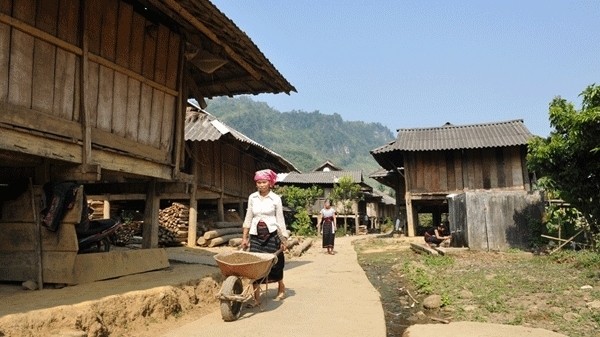The information was made at a workshop to present data on Vietnamese women and men based on the results of the national survey in 2015 on the socio-economic situation of 53 ethnic groups in Vietnam through the lens of gender. The event was organised by the National Committee for Ethnic Minority Affairs (CEMA), the Irish Embassy in Vietnam and the United Nations Entity for Gender Equality and the Empowerment of Women (UN Women) in Hanoi on November 21.
The socio-economic survey of 53 ethnic minorities in Vietnam in 2015 is the largest national census on EM groups conducted by the General Statistics Office of Vietnam so far. Accordingly, the EM and mountainous areas account for nearly three quarters of the country’s natural area, which is strategically important especially in regards to socio-economic development, national defence and security. It is residential area for the majority of 53 ethnic minorities with 13.38 million people, accounting for 14.52% of the total population. Of these, male are 6.72 million, accounting for 50.2%; female make up 6.66 million, accounting for 49.8%.
The analysis results from the above national survey from 2015 show that gender gaps among EM groups and between EM groups and the majority of the Kinh people are still large and persistent in many socio-economic areas and EM women are still disadvantaged and vulnerable. EM groups are disadvantaged compared to the majority of the population in terms of education and employment, the ability to change their place of residence and workplace, and their access to financial services and production resources such as land and market access due to stereotypes and other cultural barriers.
However, in practice, gender issues in the EM areas have not yet been systematically analysed, which hinders the development, implementation and monitoring of policies and programmes for the development of the EM and mountainous areas in a sustainable manner to meet the real development needs of Vietnamese ethnic women and men.
Nguyen Thi Tu, Head of CEMA’s Ethnic Minority Department, said that gender inequality in EM groups is of pressing concern in some key areas, including economy, education and training and healthcare. In addition, gender-based violence is also a major problem. Violence in EM families is widespread, particularly in paternal ones.
According to the study, 58.6% of EM women aged 15-49 believed that husbands had the right to beat their wives for any of the following five reasons: the wife went out without permission, the wife neglected to care for the children, the wife refused to have sexual intercourse with her husband, and the wife ruined food. Meanwhile, the rate in Kinh and Hoa women is only about 28%.
.jpg) |
Gender gaps among EM groups and between EM groups and the majority Kinh people are still large and persistent. (Credit: UN Women)
Tu also added that early marriage is a matter of concern for EM women. Some ethnic groups have a high rate of child marriage which is up by 70%. Many girls in child marriages categorically lose any chance to study. Early marriages, early childbearing, living in poverty, and lack of good employment opportunities force girls to become wives/mothers/grandmothers which creates a vicious cycle of poverty that is clinging to their future. Therefore, it is necessary to separate the gender issue in the data analysis to develop support policies for ethnic girls and women.
It is clear that EM women and girls are more vulnerable in their families and communities as they face a wide range of discrimination and dual inequality on ethnicity and gender derived from its own conditions, circumstances and living environment. This includes backward concepts that have been ingrained in the minds of the entire EM community for many generations.
From the fact of gender inadequacies in EM areas, the CEMA has coordinated with relevant ministries, sectors and localities to develop a project to "Support gender equality in EM areas during 2018-2025". The plan has been submitted to the Prime Minister for consideration and approval with the overall objective to make positive changes in the implementation of gender equality and empowerment support for the women in EM areas, contributing to the achievement of the objectives under the National Strategy for Gender Equality.
One of the project’s specific objectives is to strive for 80% of EM households to have access to information on gender and the law on gender equality. In addition, 30-50% of communes with ethnic minorities would develop models of gender equality and gender-based violence prevention. The programme is expected to be implemented in EM communes and districts.
Elisa Fernandez, UN Women Head of Office in Vietnam, stressed that meeting gender needs should be seen as an important part of national EM policies. To do this, government agencies, including the CEMA, need to increase resources and, through specific gender-responsive goals, design innovative solutions and actions, while developing a gender disaggregated data system for age and ethnicity in order to effectively identify the needs and socio-economic status of EM women and men.
















